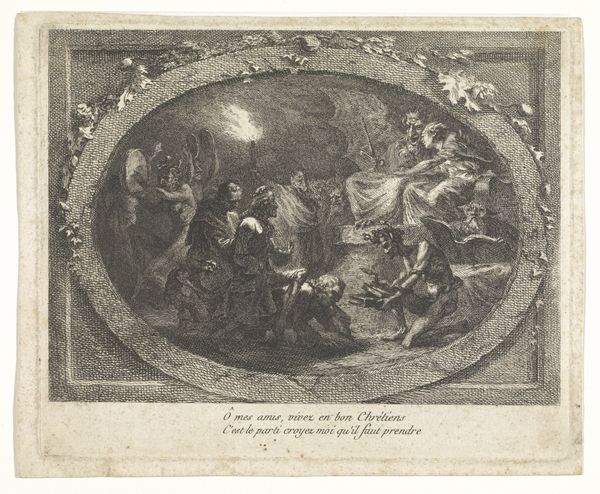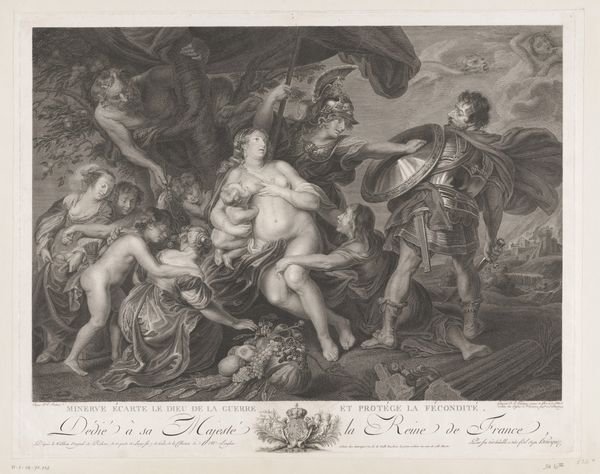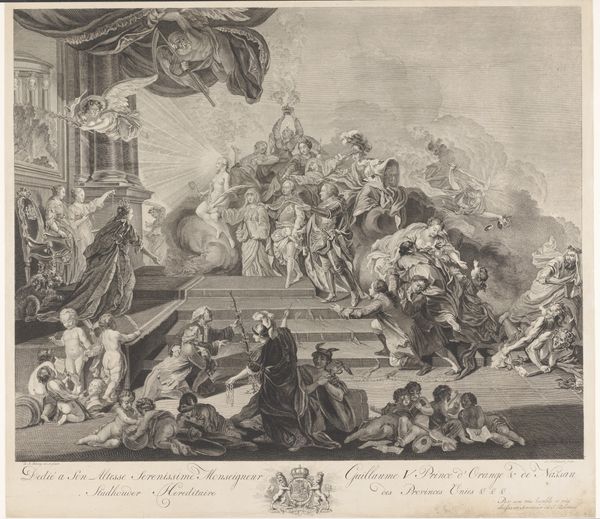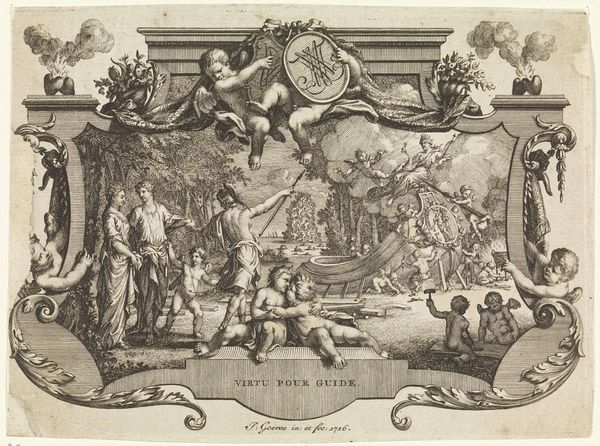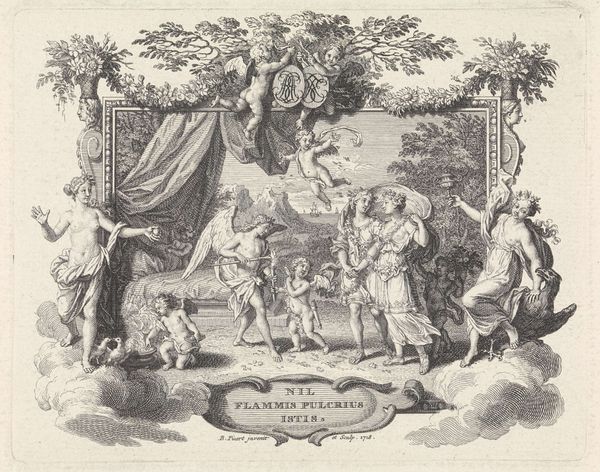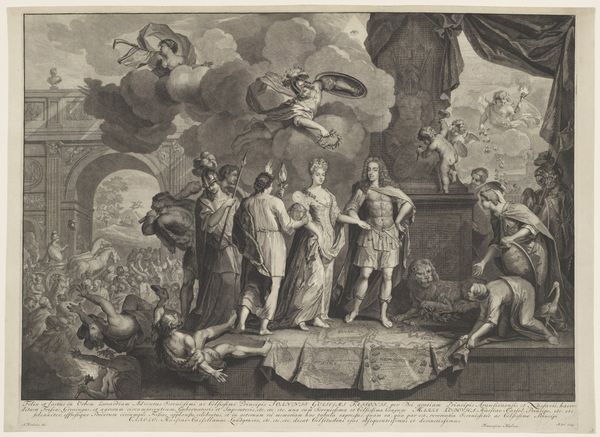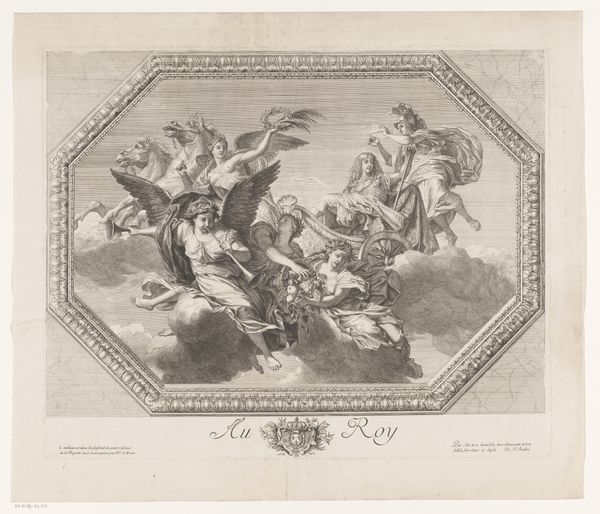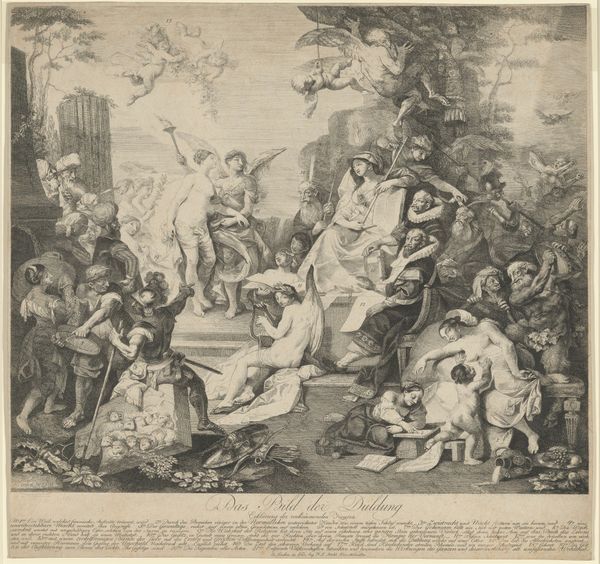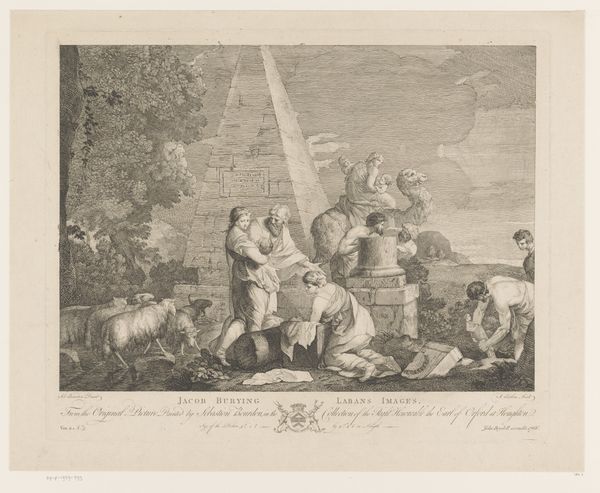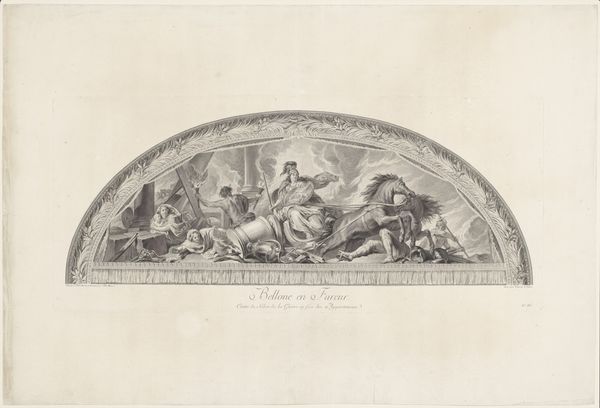
print, engraving
#
allegory
#
baroque
# print
#
old engraving style
#
figuration
#
history-painting
#
engraving
Dimensions: height 533 mm, width 855 mm
Copyright: Rijks Museum: Open Domain
Curator: The piece before us is entitled "Mars en Venus met putti en Gratiën," translating to Mars and Venus with putti and Graces. Created between 1679 and 1728, this engraving is attributed to Jean-Baptiste de Poilly. Editor: My initial response? A sense of meticulously rendered frivolity. The stark contrast inherent in engraving lends a curious tension to the sensuous scene depicted. The interplay of light and shadow articulates musculature but simultaneously lends an almost ethereal quality to their bodies. Curator: Precisely. De Poilly’s skill is evident in his command of line. Consider how he uses hatching and cross-hatching to create depth and texture, from the soft drapery to the more solid forms of the figures. It adheres closely to Baroque conventions, with its elaborate composition and allegorical subject matter. Editor: It certainly screams of a specific socio-cultural moment. We see a display of opulent leisure, catering to a wealthy elite who found value in these classical allegories. What's also fascinating is how prints like these circulated – making grand mythological narratives accessible and shaping broader artistic tastes. The reproductive nature of engraving means its significance lies in cultural dissemination as well as artistry. Curator: I agree. It's a conduit for a specific artistic vision. If you observe, the formal structure reflects that, the careful arrangement guiding the eye around a circular dynamic; note how the ornamental arch reinforces this organization. The curves soften any harsher contrasts created by its medium while still working within it, presenting Baroque values elegantly and classically through form itself. Editor: Thinking about the social context further enriches our understanding. The artist serves as more than just a crafter, the engraver’s work becoming embedded into broader mechanisms and histories that exceed individual genius: institutions influencing them just like materials enabling works Curator: An important point to keep in mind when looking and analyzing, and that applies as much to the past and present day of production and observation! Editor: Indeed. I find myself appreciating the meticulous detail with a newly awakened eye for the historical forces that shape not just art but perception.
Comments
No comments
Be the first to comment and join the conversation on the ultimate creative platform.
